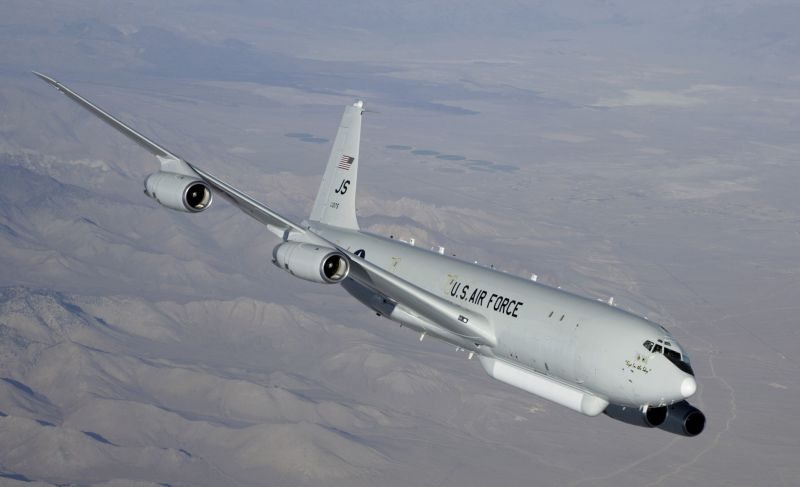Joint STARS recently became the first Air Force airborne system to fully retrofit new terminals that will improve warfighter communication.
The Joint STARS Communications and Network Upgrade program successfully installed, tested and fielded the first of its Multifunctional Information Distribution System Joint Tactical Radio System, or MIDS JTRS, terminals.
“This was a huge success for Joint STARS because it became the first Air Force platform to be fully integrated with MIDS JTRS,” said 2nd Lt. Samantha Sarkis, the Joint STARS CNU program manager. “We want to ensure Joint STARS will remain a vital asset in this high-demand environment, and this will help us achieve that goal.”
MIDS JTRS replaces the Joint Tactical Information Distribution System Class Two Terminals currently operating on the rest of the Joint STARS fleet and provides secure data and voice communications between airborne, ground and seaborne platforms, enhancing communication and battle management capabilities. It also is compatible with a Link 16 network, which is the primary Tactical Data Link exchange for air-to-air and air-to-ground communications.
Link 16 provides military units and platforms with a secure data network for the exchange of near-real time tactical data, including text messages, imagery and digital voice. MIDS JTRS not only offers the Link 16 compatibility, but does so in a form factor that is half the size, half the weight and uses half the power consumption of the current class two terminals.
“These reductions are important, especially aboard an aircraft,” Sarkis said. “MIDS JTRS is twice as reliable as the current JTIDS Class 2 terminal with shorter mean-time-to-repair and reduced life-cycle cost.”
The first MIDS JTRS-equipped Joint STARS aircraft was delivered to the 116th and 461st Air Control Wing at Robins Air Force Base, Ga., Feb. 20.
“Fielding the first fully integrated Joint STARS MIDS JTRS-equipped aircraft represents the culmination of a cooperative effort between three separate program offices: the Joint STARS developmental program office, the Airborne Networks program office, also located at Hanscom AFB, and the Navy Multifunctional Information Distribution System program office in San Diego,” Sarkis said.
According to program officials, the MIDS JTRS installation took place simultaneously with two other retrofit efforts, a Joint STARS first. While Northrop Grumman Aerospace Systems, the Joint STARS prime contractor, was installing the CNU equipment, they also installed an upgrade to blue force tracking tools and an Enhanced Land Maritime Mode capability. The ELMM substantially improves Joint STARS ground moving target indication accuracy and maritime tracking capabilities. The Hanscom AFB Joint STARS office developed the CNU and ELMM capabilities, but the blue force tracking improvements were managed by the Robins AFB Joint STARS sustainment program.
“This tri-retrofit was ground-breaking for Air Force airborne systems,” said Sarkis, “It represented a carefully coordinated effort and cut nearly 10 days off of the total installation time as compared to the time required to install the three upgrades separately. The end result is the most capable aircraft in the Joint STARS fleet.”
Northrop Grumman Corp. and the Joint STARS program office plan to complete the remaining 15 installations by March 2015.









